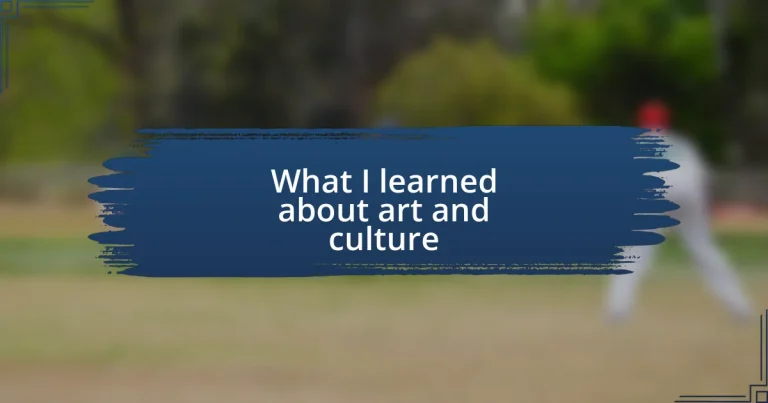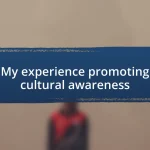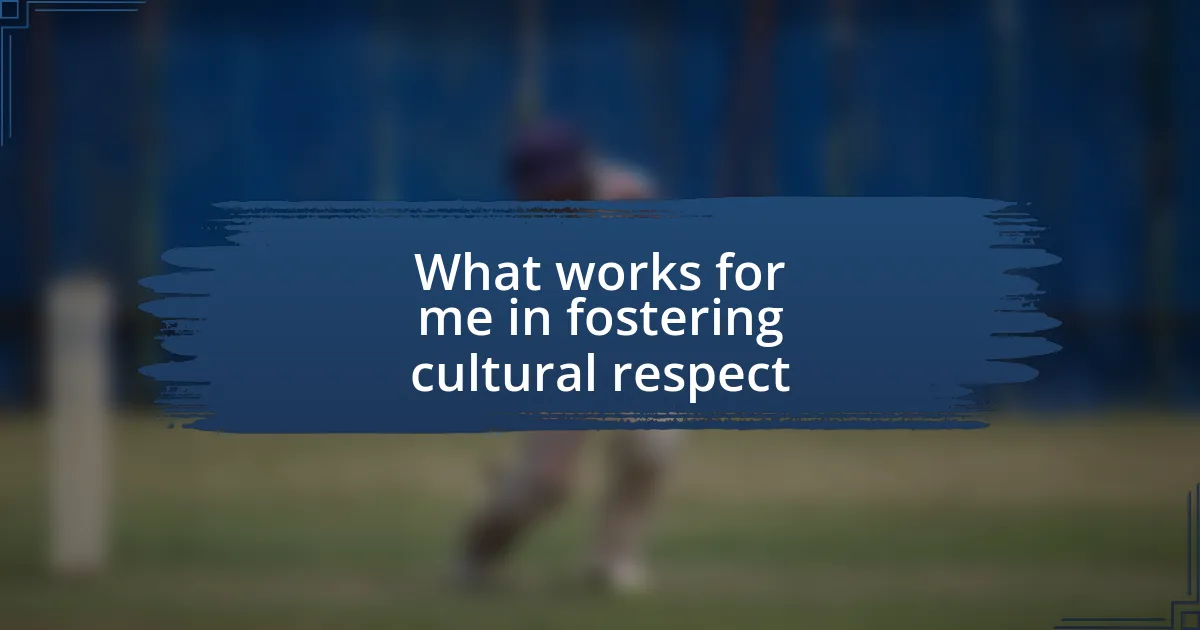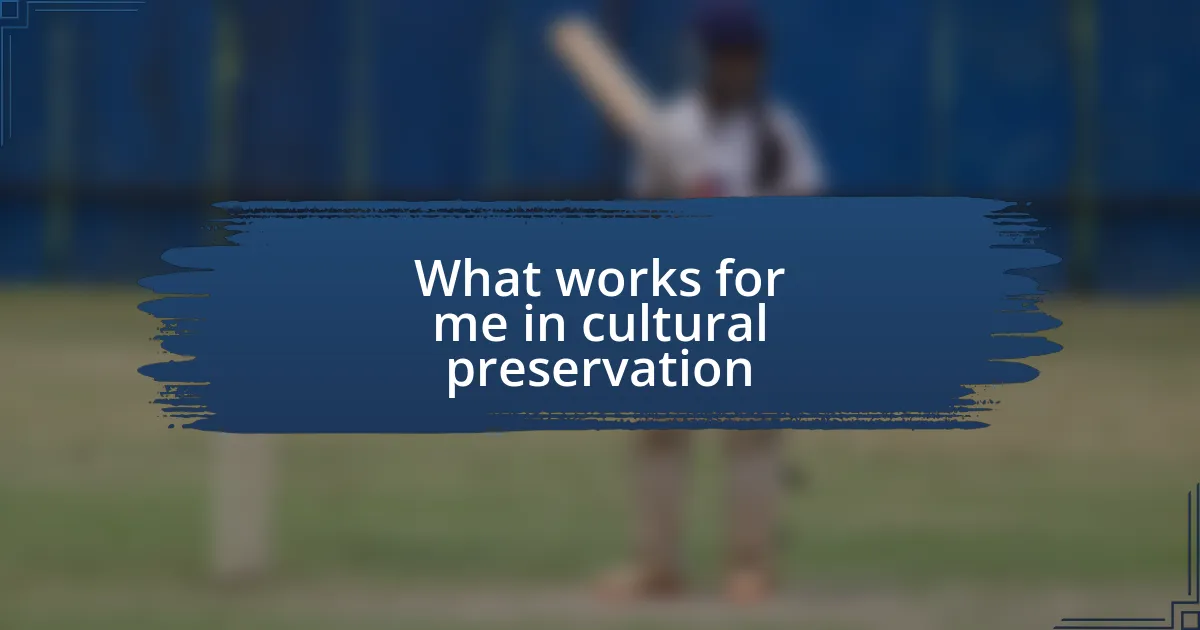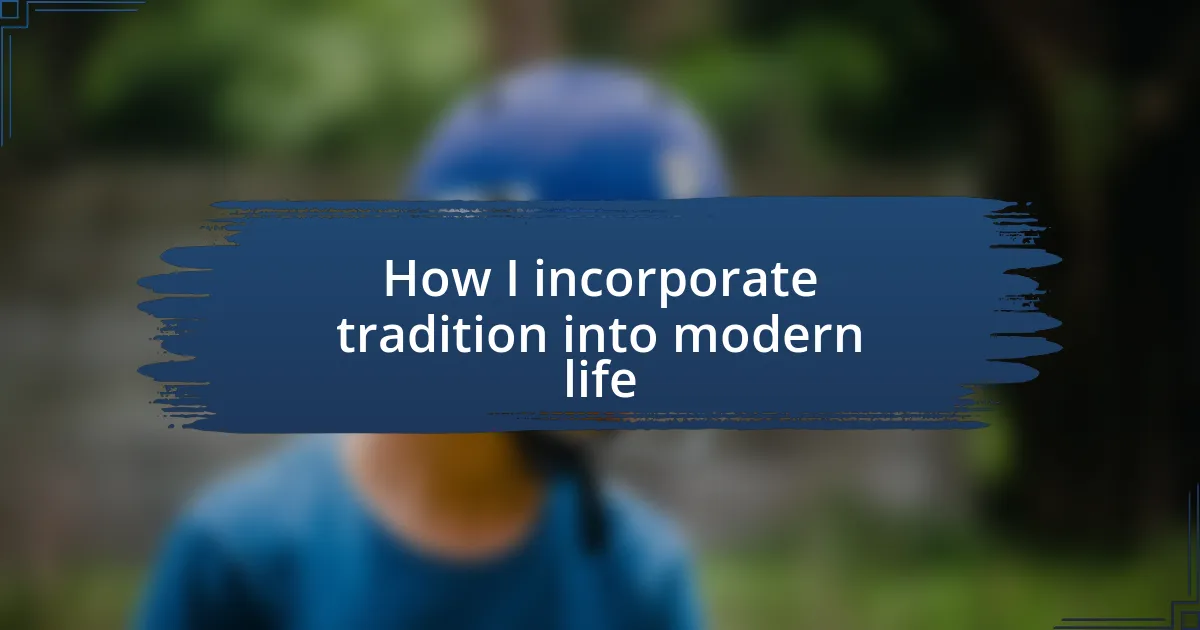Key takeaways:
- Art serves as a reflection of culture and emotions, engaging viewers through various forms and mediums.
- Different art movements mirror societal values and issues, enabling artists to document and comment on their times.
- Art education fosters critical thinking, self-expression, and cultural awareness, impacting both individuals and communities.
- Engaging with local art communities enhances personal growth and connection, making art a collaborative and enriching experience.
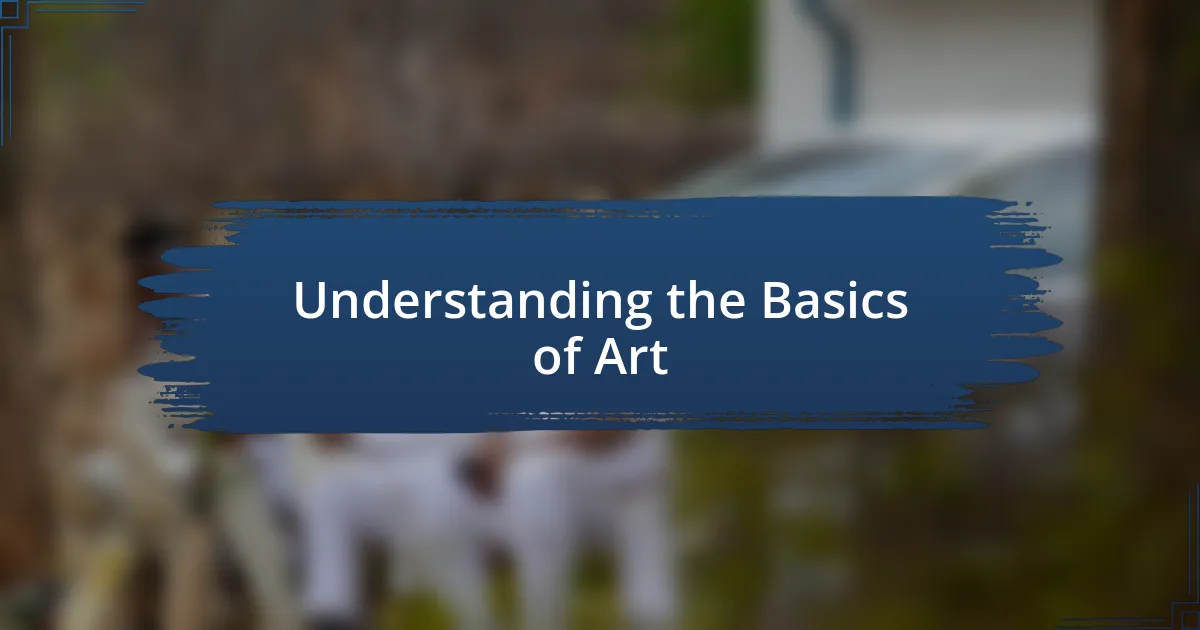
Understanding the Basics of Art
Art is often seen as a reflection of culture, emotions, and ideas. Personally, I remember the first time I stood in front of Van Gogh’s “Starry Night.” It felt like the swirling colors were alive, making me wonder how one painting could convey such deep emotion and evoke an immediate response. Isn’t that what art is all about? The ability to make us feel?
Understanding the basics of art involves recognizing its various forms and mediums. Whether it’s painting, sculpture, or digital art, each medium offers a unique way to express thoughts and feelings. I once tried my hand at pottery, and I was astounded by how clay, in its raw state, could be transformed into something beautiful with just a bit of molding and patience. Have you ever thought about how much effort goes into creating a single piece of art?
In grasping the essence of art, we also need to explore elements like color, line, and texture. These elements interact to create harmony or tension within a work. I’ve experienced moments when a mere splash of red against a dull background instantly shifts the whole atmosphere of a painting. It makes me ask: what are the elements in your favorite artworks that resonate with you? Understanding how these elements function can transform your appreciation of the art around you.
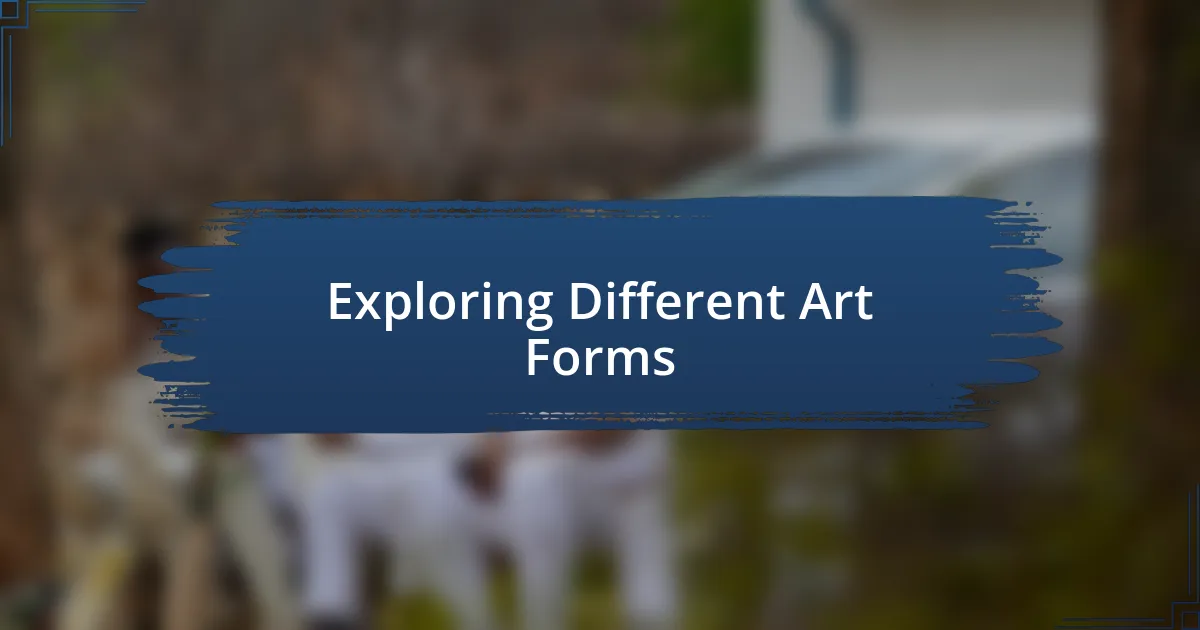
Exploring Different Art Forms
Exploring various art forms has opened my eyes to the vast ways people express their inner worlds. I vividly recall visiting a local gallery showcasing a blend of traditional and contemporary art. The interplay between classical paintings and modern installations was fascinating. It made me realize that art is not confined to one style or era; it evolves, reflecting the changing times and cultures. Emerging from that experience, I found myself pondering the infinite possibilities for expression within each medium.
Here are some key art forms that exemplify this diversity:
- Painting: Often involves using pigments on a surface, allowing artists to create likenesses or abstract pieces.
- Sculpture: Three-dimensional art that manipulates materials such as stone, metal, or wood, making the form come alive.
- Digital Art: A modern medium that incorporates technology, offering new dimensions and interactivity.
- Performance Art: A live experience where artists use their bodies to convey messages, making the audience part of the narrative.
- Photography: Capturing moments in time through a camera, offering a unique perspective and storytelling approach.
Each of these forms adds a distinct voice to the dialogue of art and culture, enriching our understanding and appreciation.
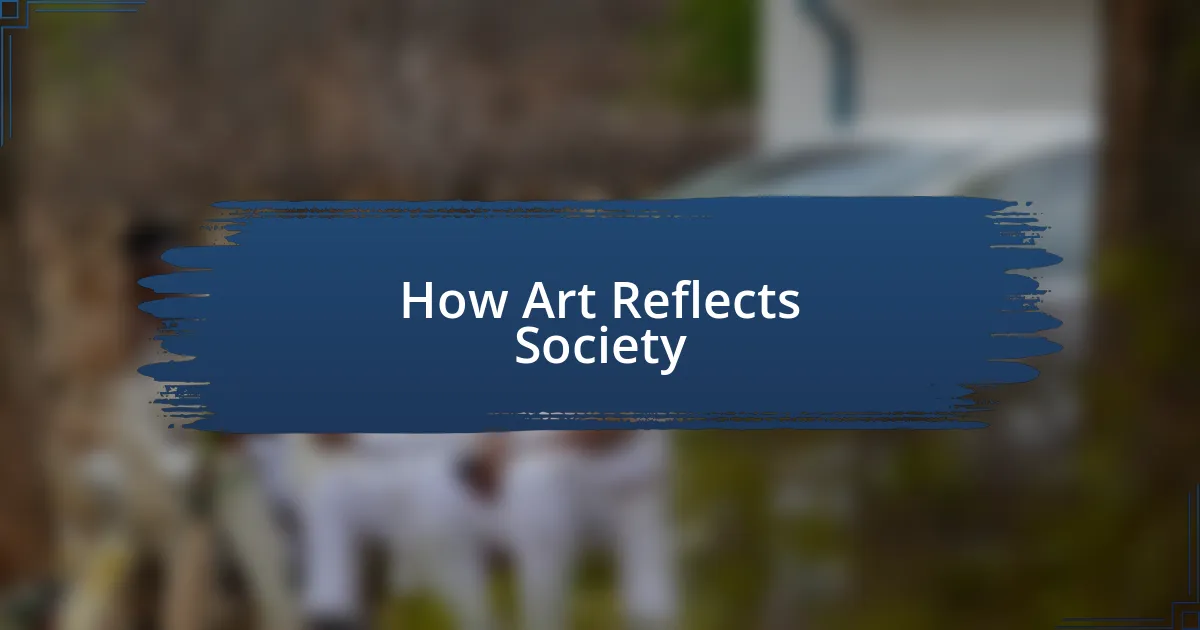
How Art Reflects Society
Art has an uncanny ability to mirror the society from which it springs. I remember standing in front of a powerful mural once that depicted the struggles of local communities during economic downturns. It struck me how the colors and shapes captured not just pain but resilience, blending the aesthetics of art with raw human experience.
As I explored different artistic movements, I realized that each period reflects societal values and concerns. For instance, during the Renaissance, art exuded themes of humanism, focusing on individual potential and beauty. In contrast, the abstract art of the early 20th century often expressed the chaos wrought by war and technological change. It made me consider how artists become historians in their own right, leaving visual records of their times.
The intersection of art and society often reveals deeper truths about human emotions and collective experiences. I once attended a film festival that showcased documentaries about social issues, shedding light on matters that mainstream media often overlook. Each film was a reminder of how crucial art is in sparking conversations and fostering empathy in a disconnected world.
| Art Movement | Societal Reflection |
|---|---|
| Renaissance | Focus on humanism and individualism |
| Abstract Art | Commentary on chaos and change |
| Street Art | Voicing social issues and community struggles |
| Performance Art | Engaging audiences in dialogues about identity and culture |
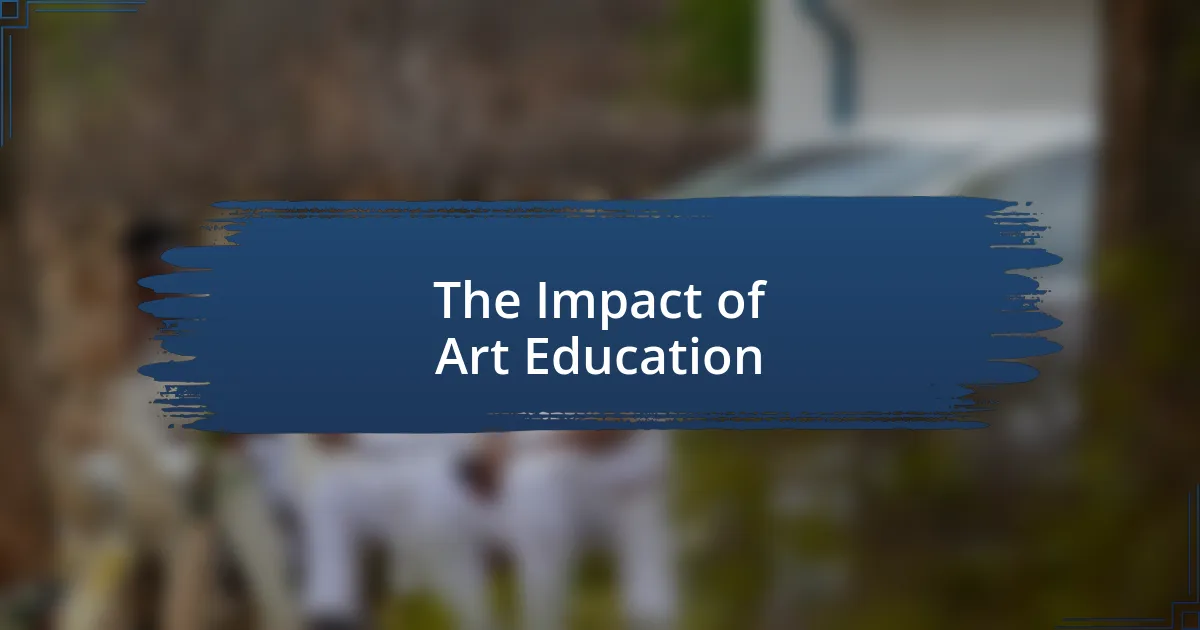
The Impact of Art Education
Art education profoundly shapes our understanding of both creative expression and cultural awareness. When I first enrolled in an art class, I discovered that it wasn’t just about learning techniques; it was about fostering critical thinking and an appreciation for diverse perspectives. Have you ever found yourself challenged to view the world differently through a simple brushstroke or a sculpted form?
The impact of art education goes beyond the classroom. I had the opportunity to volunteer at a community art program for underprivileged children, where I witnessed firsthand how creative activities can inspire confidence and encourage self-expression. It became clear to me that teaching art enables students to communicate their feelings and thoughts, offering a powerful outlet for those who might otherwise feel voiceless.
Furthermore, art education cultivates a deeper understanding of cultural narratives. I recall attending an exhibition showcasing works from various cultures, and each piece told me a story that resonated with shared human experiences. How can we understand our complex social fabric without the lens of art? Engaging with diverse artistic traditions not only broadens our worldview but also nurtures empathy in a society that often feels divided.
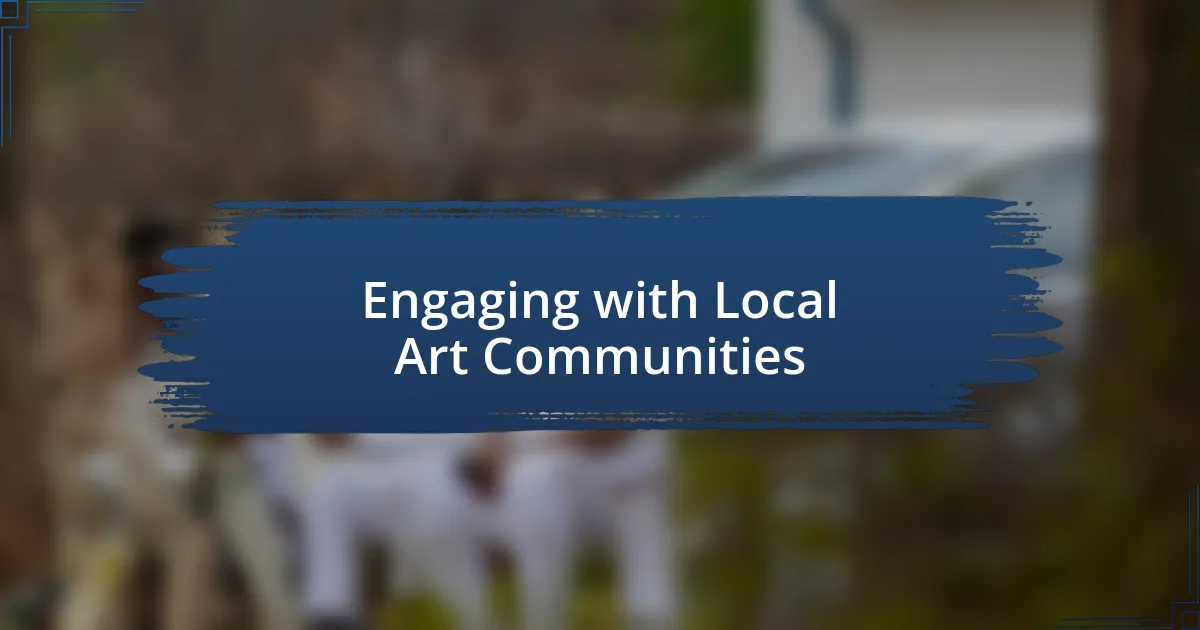
Engaging with Local Art Communities
Art communities offer a vibrant space to connect with creativity and passion in ways that deeply enrich our lives. I once attended a local gallery opening where artists shared their stories behind each piece, and it was fascinating to see how their backgrounds influenced their work. Have you ever felt a connection to someone through their art that transcended words?
In my experience, participating in community art events can ignite a sense of belonging. I remember joining a mural project where neighbors painted together, laughing and sharing their unique artistic perspectives. It was exhilarating to watch personal and collective narratives come to life on that wall, showcasing how art fosters connection in our often fragmented communities.
Moreover, engaging with local art groups can enhance our cultural understanding and personal growth. I recently took part in a workshop led by a local artist, which pushed me out of my comfort zone and opened my eyes to new techniques and mediums. This experience led me to reflect: how often do we allow ourselves to explore new forms of expression and rediscover our creative potential?
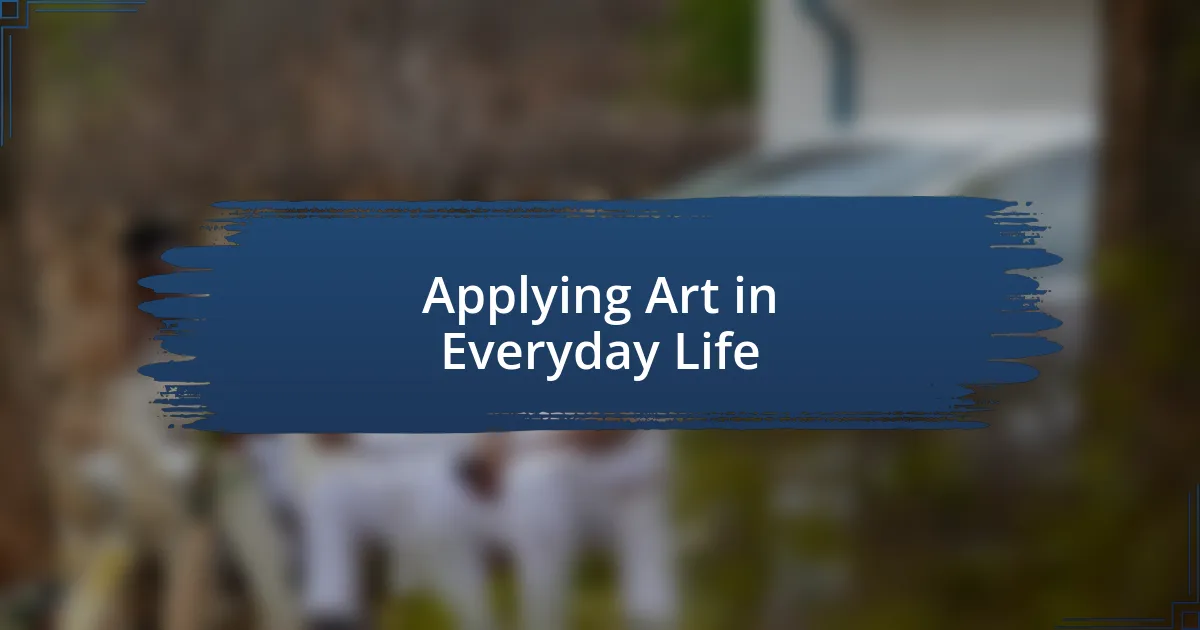
Applying Art in Everyday Life
Art can infuse everyday moments with deeper meaning and joy. I remember decorating my home with personal art pieces created during a pottery class. Each bowl and vase holds a story—the laughter shared with classmates, the satisfaction of shaping clay, and the beauty of something made with care. Have you ever looked at an object and felt the emotions tied to its creation?
Moreover, I often find inspiration in the small things, like turning a simple meal into an artistic experience. I started experimenting with plating food beautifully, which transformed our family dinners into something special. It sparked conversations, laughter, and appreciation for the effort behind each meal. Isn’t it amazing how a bit of creativity can turn the mundane into something extraordinary?
Integrating art into everyday life doesn’t have to be complicated—it’s about embracing creativity wherever you are. For instance, I took time to create a vision board with magazine cutouts that reflect my aspirations and dreams. Every glance at it reminds me of my goals, inspiring me daily. How often do we take a moment to visualize our dreams in a playful, artistic way?
